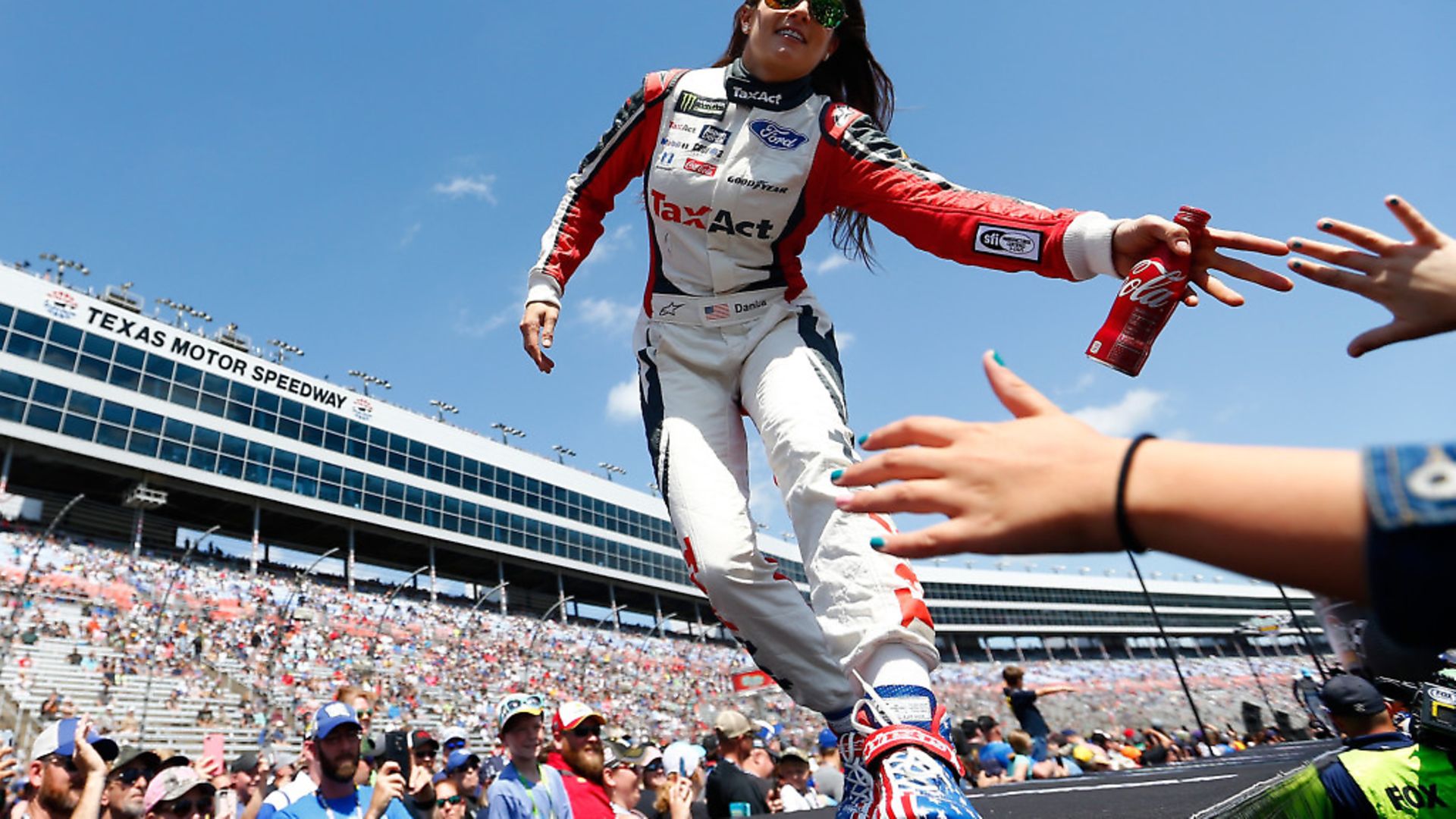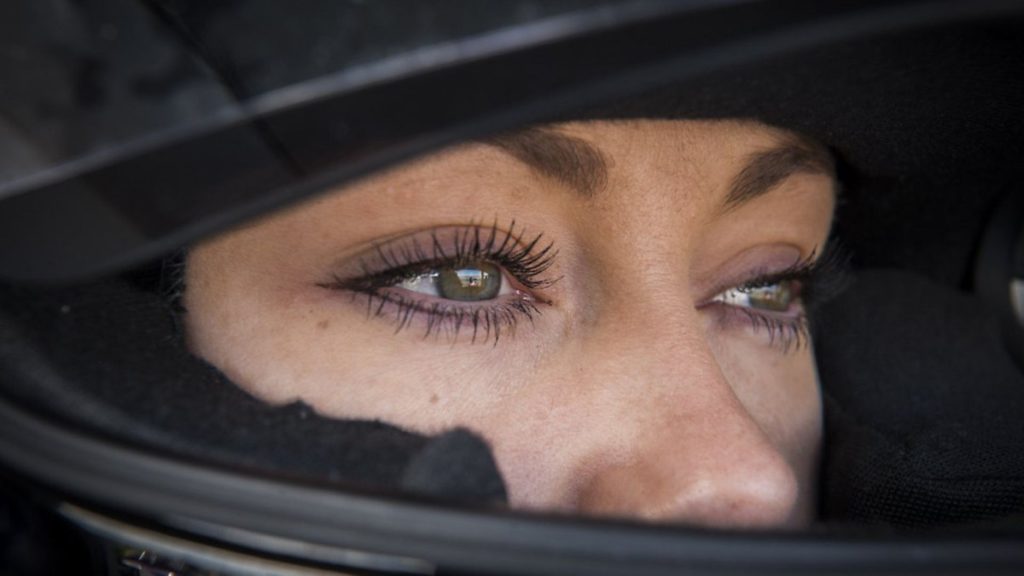
The 1975 Spanish Grand Prix was a shambles. Before the start drivers threatened to boycott the race over concerns the ageing circuit amid the trees of Barcelona’s Montjuïc Park had become too dangerous.

In the end they raced but, tragically, they had been right. Rolf Stommelen’s GH1 lost its rear wing, smashing into a spectator area and killing five people. The race was halted after just 29 laps.
Unsurprisingly, in the aftermath one extraordinary feat passed almost unnoticed. In the sixth and last championship points-scoring place was Lella Lombardi. And on that wretched afternoon she set a record that still stands. The Italian is the only woman to score a Formula 1 World Championship point. It’s an astounding – indeed embarrassing – record for the sport made more ignominious by the fact that, because the race was cut short, reduced points were awarded. Thus Lombardi actually has only a half point to her name.
Formula 1 – and motorsport generally – has not been especially kind to women. As recently as 2016 ex-Formula 1 supremo Bernie Ecclestone was saying women could not be taken seriously in Grand Prix racing. The last woman to take part in a Grand Prix weekend was Scot Susie Wolff who drove for Williams – but only in free practice – at the British Grand Prix in 2014. The last woman to actually attempt to qualify for a race was Italian Giovanna Amati who drove for Brabham in 1992. She failed to qualify for the first three Grands Prix of the season and was replaced.
Motorsport, it seems, has historically seen women as mere adornment, witness the once ubiquitous grid girls – models who stand with placards on the starting grid to indicate where each car will line up, and as adjuncts to sponsors. Even when the new competition solely for women, the W Series, launched last year, eurosport.com illustrated it with a photograph of a grid girl rather than a driver.

When Lewis Hamilton was accused of sexism for spraying a podium girl with champagne after winning the Chinese Grand Prix in 2015 the complaints were arguably misplaced. Everybody on the podium gets sprayed liberally; maybe the question should have been why were women there as decoration in the first place?
And while things have moved on slightly in recent years with Formula 1 following the lead of Formula E and the World Endurance Championship in replacing grid girls with, for example, young fans, women racers are still hugely underrepresented.
It’s not as though women haven’t been successful in motorsport. Frenchwoman Michèle Mouton won four world championship rallies in the 1970s and 1980s and came second in the 1982 championship. American Danica Patrick became the only woman to win an Indycar race (North America’s equivalent of Formula 1) in 2008 and came third in the 2009 Indianapolis 500, the world’s richest motor race.
In 1980 South African Desiré Wilson won a Formula 1 race (a British championship event, not a Grand Prix), the only woman to do so, and last year Flick Haigh became the first woman to take an overall UK title when she clinched the British GT Championship.

But even amid these successes, conflict and contradiction abounds. Danica Patrick appeared as a cover model on men’s magazine FHM and regularly took part in lingerie shoots. The Victoria’s Secret underwear chain placed her atop its list of ‘What’s Sexy’. And while Susie Wolff has admitted she’d have been prepared to do similar work if it had (somehow) advanced her career, she now heads up the Venturi team in the electric racing series Formula E. But despite being a team principal in her own right she is frequently described as ‘the wife of’ Toto Wolff who has an identical role at the Mercedes Formula 1 team of world champion Hamilton. Motorsport, it seems, is full of inconsistencies.
In general, women have been neglected in a thoroughly male-dominated sport; ironic given it is one where both sexes can compete equally. Women driver ‘jokes’ abound, and outstanding females will often be overlooked in favour of mediocre males.
It’s these attitudes the W Series aims to counter. Women will compete throughout Europe, culminating in the final round at Britain’s Brands Hatch. Once team owners see women can lap as quickly as men, then more will get drives in major series like Formula 1, runs the argument. It will showcase female talent in a way the current system does not.
And the W Series has certainly attracted talent. Driving Formula 3 cars – long regarded as a stepping stone to Formula 1 – the list of drivers includes Britons Jamie Chadwick, the first woman to win a British Formula 3 Championship race, and Alice Powell, the first woman to win a Formula Renault race. Also competing are Sabré Cook of the US, a multiple winner in karting, plus champions from other motorsports series including South Africa’s Naomi Schiff – 13 nationalities are represented among the 18 drivers competing.
But even the best intentions can throw up diverging opinions. Some female drivers have welcomed the W Series, having been denied access to top drives by nothing other than what they consider antediluvian attitudes. Others, however, have described the concept as patronising, suggesting it assumes they are incapable of competing equally against men.
British Indycar racer Pippa Mann has argued that the series represents a form of segregation. ‘I am deeply disappointed to see such a historic step backwards in my lifetime,’ she said. German Formula 3 driver Sophia Flörsch, who competed in the 2019 European Masters series against men, said: ‘I agree with the arguments, but I totally disagree with the solution.’ Swiss former Formula E driver Simona de Silvestro has suggested the money used to promote the series should instead be spent on backing female talent in existing championships to level the playing field.
Motorsport journalist Rachel Harris-Gardiner agrees: ‘The $1.5m prize fund is perhaps enough for one driver to do one season of international Formula 3. In my opinion, it would be better spent supporting one or two drivers more extensively, for longer. Also what happens afterwards? The winner will receive money or a prize drive but when that’s over she is back where she started. Female racers need long-term sponsorship and support.’
But CEO of the W Series Catherine Bond Muir argues the competition will do just that. ‘There are simply too few women competing,’ she says. ‘The W Series will unleash the potential of many more and as they become global superstars, that will unlock sponsorship and opportunity.’
Others say the major hurdle is getting women onto the track in the first place. The W Series at least guarantees that. ‘Right now, I think, on balance, it’s necessary,’ says Jamie Chadwick, and while she admits opinions are divided she poses the open-ended question: ‘Surely it’s better than not racing at all?’ GP3 driver Tatiana Calderon agrees saying ‘it provides opportunities to prove women can compete at the same level as men’. But Harris-Gardiner also has reservations about the selection criteria used to choose the W Series drivers. Speed alone was not the only yardstick, which she believes may weaken the field ‘and will add to the perception of female drivers as less skilled’. The selection process, which included fitness, media skills and psychometric tests, is being turned into a reality television show which Harris-Gardner believes detracts from the overall purpose: showing how fast women can drive and how well they can compete.
Feminism and women in motorsport have sometimes had a complex relationship. Danica Patrick’s modelling career led to criticism from campaigners and disapproval from sports commentators who believe, despite her success, she traded on her looks, and could have afforded a better role model for girls hoping to succeed in sport.
Patrick’s defence was that she didn’t care how her money was made as long as she could race. And, indeed, others have called her a trailblazer for women in motorsport and beyond. The Guardian described her as ‘the sports pin-up who grinds harder for feminism than the great Billie Jean King ever could’. Such clashes of opinion are, it would seem, typical for many women in motorsport and the public sphere in general. And they seem set to follow the W Series into its first season.
Perhaps one way to look at the W Series is to consider it – rightly or wrongly – as a piece of positive, rather than negative, discrimination. The likelihood of otherwise seeing 18 women racing at a single meeting this season is pretty minimal, which suggests female racers are not getting the drives their talent deserves.
More fool the male-run teams, you might think. But when drivers start posting lap times as good as – or better than – the men, teams might sit up and take notice. Without the W Series showcasing talent that might otherwise never reach the grid, the chances of that happening are greatly diminished.
Warning: Illegal string offset 'link_id' in /mnt/storage/stage/www/wp-includes/bookmark.php on line 357
Notice: Trying to get property 'link_id' of non-object in /mnt/storage/stage/www/wp-includes/bookmark.php on line 37






